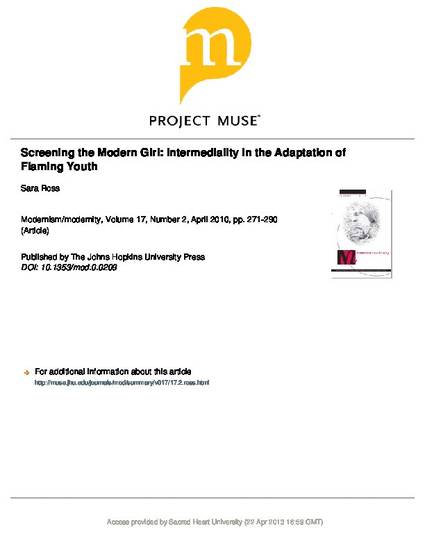
In November 1923, First National Pictures released a film adaptation of a scandalous bestselling novel, Flaming Youth, in which three upper-class sisters flout the conventions of proper courtship and girlish chastity held dear by the previous generation. The novel presents the sisters as examples of the revolution in sexual behavior of the modern girl happening in the United States and around the world. Record crowds flocked to the theater to see the wild partying, nudity, and sex of the book brought to life on screen.
Of course, texts such as these were under close scrutiny for the effect that they might have on their audiences’ behavior. While they capitalized on public fascination and fears about the modern girl, they also developed strategies to tell such stories in ways that shielded them from censorship and excessive public outcry. Filmmakers were under even greater constraints than popular authors when it came to what they could portray. Not surprisingly, the film version of Flaming Youth had to rework and tame the story for the cinematic context, but the contents of the novel were still a powerful presence in the film text.
Ross, S. (2010). Screening the modern girl: Intermediality in the adaptation of flaming youth. Modernism/modernity 17(2), 271-290. Doi: 10.1353/mod.0.0209

Copyright © 2010 The Johns Hopkins University Press. This article first appeared in Modernism/modernity 17:2 (2010), 271-290.
PMID: 20653110
Reprinted with permission by The Johns Hopkins University Press.